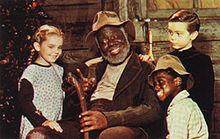Gilgamesh Performance
I first read Gilgamesh in my 9th grade English class back in high school. I do not recall which translation we read of the text, but I do remember that we had an assignment to develop a creative interpretation of the piece. My friend and I decided to create a song titled “Where is Enkidu” (to the tune of the Black Eyed Peas’s song “Where is the Love?”) for our project. We envisioned the song to serve as a eulogy following the death of Enkidu. In the song, my friend vocalized Shamhat’s role in the epic and shared her pain over losing her lover. For my role, we created the fictional character of “Menkidu” who we imagined to be the love child of Enkidu and Shamhat’s lovemaking.
I will likely regret sharing this, but I found the music video we made to record the song. But since this class is titled “Performing American Literature”, I feel as though I must share this (very mediocre) performance. It is quite possibly the most cringe-worthy video of me available on the Internet, so I hope you get a good laugh. Please keep in mind that I am 14 years old in this video and am only now aware of how incredibly off-pitch I sound. Enjoy!
Link (Links to an external site.)
Reading Children’s Books–Update April 22, 2017
I have found it pretty challenging to determine what age group I am addressing in writing my children’s book. Writing for a 4-6 year old age bracket is a very different situation than writing for children 6-8 or 8-10. In trying to learn more about the language, I have spent time reading a range of children’s books to discover the language those authors used in their work.
Some of my favorite books that I have read (which I highly recommend to adults of any age) are: Where the Wild Things Are, Goodnight Moon, Blueberries for Sal, Happy to be Nappy, and If I Ran for President.
Children’s books are a performative medium because they are often read aloud to young children who cannot read yet. To learn more about this performative aspect, I plan to watch videos of authors reading children’s books aloud. I believe that will aid me in trying to discover my “voice” for this project.
Stereotypical Images–Update April 27, 2017
Last year, I was enrolled in Professor David Blight’s course “Problems with American Historical Memory: The Civil War”. For my final paper, I analyzed the “Uncle Remus” stories published by Joel Chandler Harris. Harris was a Southern newspaper columnist in the 1860s-80s. In 1877, he published his first “Uncle Remus” tale in the Atlanta Constitution. Harris, a white man, employed the fictional Uncle Remus to tell moralistic children’s stories like the Brer Rabbit tales.
Uncle Remus mirrors the Uncle Tom stereotype created by Harriet Beech Stowe in Uncle Tom’s Cabin. The stereotype perpetuates the a view of a happy, subservient black man content with his inferior position in American society. This figure plays out in countless popular media narratives from books, plays, to movies. In my paper for Professor Blight’s class, I investigated the role of Uncle Remus in Disney’s 1946 animated film Song of the South. Today, few copies of the film exist as it is recognized as being a very racist depiction of the antebellum South.
The children’s book I am writing for this class is my attempt to rectify some of the damage done by the proliferation of the “Uncle Tom” stereotype. That will be tricky, though, seeing as how pervasive it is in the popular imagination.
Below are some images from Song of the South and a clip of the film’s infamous song Zip-a-Dee-Doo-Dah.

